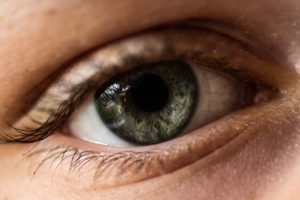How Are Human Eyes Different From Animal Eyes?
There are a lot of things that set humans apart in the animal kingdom. The complexity of the eye organs is one of them. It’s hard to say which is superior simply because of the different needs of animals, but human eyes are certainly special organs.
The only human organ that surpasses the eyes in complexity is the brain itself. A fingerprint has 40 unique traits; the eye has 256 unique traits. This is why retina security scans are more reliable than fingerprint scans.
Only 1/6th of the eye is exposed to the air at a time, which is why an eyeball outside of the human head appears so alarmingly large.
But compared to other animals, how do humans measure up as far as eyesight goes?
Color and Night Vision
Rod receptors–named for their rod-like shape–are the receptors in the retina that specialize in night vision. Cone receptors–once again named for their shape–respond differently to different wavelengths, which results in seeing color.
Cats for example have lots of rod receptors, but not a lot of cone receptors. Humans are the opposite. We have lots of cone receptors, but not a lot of rod receptors. That’s why humans can see color but cannot see very well in the dark, and cats are the opposite.
As you can guess, color blindness in humans is usually due to missing or malfunctioning cone receptors. Cone receptors work best in bright light, which is why humans are mostly diurnal, or active during the day.
Peripheral Vision
Humans have only 190 degrees of sight. This means that you can only see about 95 degrees behind you, and anything beyond that is not within your sightline without turning your head. This is a relatively small range in the animal kingdom.
Dogs have 250 degrees of sight around their head, which aids them in hunting and seeing predators. Horses have eyes on the sides of their heads which allows them to see almost entirely behind them. They also have a blind spot directly in front of them.
2D and 3D
The placement of eyes on the head makes a big difference on how much of your world is in 3D. It is having two eyes that gives an animal the option of 3D vision. When observed with two eyes an object is seen in 3D. When observed with one eye, an object is seen in 2D.
Birds have their eyes placed almost on either side of their head. That means the sight overlap of their two eyes is very small. Only when looking directly ahead can they see objects in 3D. Because of the placement of their eyes, they usually observe an object with only one eye or the other, so most of their sight is in 2D.
Human eyes are placed much closer together on the head and point directly forward. That means the sight overlap of the two eyes is much greater, resulting in mostly 3D vision. It is only in the peripheral section that we see things in 2D.
Conclusion
Honestly, you can’t really compare animal vision and human vision, simply because of the needs of different species. Snails can’t see color at all, but their stalk eyes allow them to see in all directions to detect predators. Owl eyes are extremely large and shaped like tubes in order to capture as much light as possible, but this has resulted in them not being able to move their eyes individually. They have evolved to rotate their head all the way around their neck to optimize their incredible sight and locate prey in very dark places.
Human eyes have evolved to meet our needs of survival. Because of our big brains and superior memories, humans can compensate for a lot of the shortcomings of our very ordinary eyes. Hunting and fighting predators are not really a necessity anymore, but we sure can enjoy a day at the museum more than a snail would.




